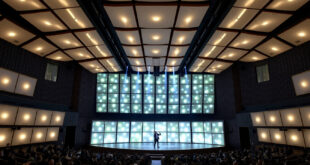Introduction
In recent years, the aviation industry has been undergoing a transformative shift towards sustainability, with a strong focus on reducing environmental impact. One of the key advancements driving this change is the integration of hybrid-electric propulsion systems into aircraft. This paradigm shift not only promises increased fuel efficiency but also a substantial reduction in emissions. At the heart of these groundbreaking developments lie power electronic technologies, playing a pivotal role in making hybrid-electric aviation a reality.
The need to optimize aircraft performance, decrease operating and maintenance costs, and reduce gas emissions is pushing aircraft industry to explore new concepts including more electric aircraft (MEA), and ultimately an All-Electric Aircraft. Electric propulsion can be powered by rechargeable batteries, fuel cells, or solar energy. Electric plane power is much simpler — batteries power an electric motor that spins a propeller.
The Rise of Hybrid-Electric Propulsion:
The aviation sector’s pursuit of cleaner and more sustainable alternatives has led to the emergence of hybrid-electric propulsion systems. These systems integrate traditional gas turbines with electric propulsion, incorporating batteries and electric motors to power the aircraft during various phases of flight. This hybrid approach enhances fuel efficiency, lowers operational costs, and significantly reduces the environmental footprint of air travel.
Power Electronic Technologies Shaping the Future:
Power electronics is the linchpin of hybrid-electric aviation, providing the bridge between traditional propulsion systems and the advanced electric components. The technology encompasses a range of devices, including inverters, converters, and motor drives, all working seamlessly to manage and distribute power between the aircraft’s combustion engine and electric propulsion system. Precise control and efficient power transfer are achieved through these technologies, ensuring optimal performance and safety
Power Conversion: In the hybrid-electric ecosystem, power conversion is crucial. Power electronic technologies convert electrical energy from diverse sources, such as batteries and fuel cells, to the high voltages and currents needed to power electric motors. This process ensures optimal energy utilization and contributes to the overall efficiency of the hybrid system.
Battery Management Systems (BMS): Central to the success of hybrid-electric aircraft is the development of advanced Battery Management Systems. Power electronic technologies play a crucial role in efficiently managing the charging and discharging cycles of the aircraft’s batteries. This ensures that energy is used judiciously, maximizing the aircraft’s electric propulsion capabilities and optimizing the overall efficiency of the hybrid system.
Innovative Motor Drives: Electric motors are integral to the electric propulsion aspect of hybrid-electric aircraft. Power electronic technologies facilitate the development of innovative motor drives that convert electrical energy into mechanical power. These drives not only enhance propulsion efficiency but also enable features such as regenerative braking, where energy generated during descent is recovered and stored for later use.
Thermal Management: Ensuring the reliability of hybrid-electric systems requires effective thermal management. Power electronic technologies play a vital role in regulating the heat generated by various components, preventing overheating, and maintaining system reliability. This is especially critical in aircraft, where efficient thermal management is essential for safe and continuous operation.
Several promising power electronic technologies are driving the development of hybrid-electric aircraft
- Wide-bandgap Semiconductors: These materials offer higher efficiency and switching speeds compared to traditional silicon, leading to lighter and more compact power electronics systems.
- Multi-level Inverters: These advanced inverters provide better control over the voltage and current supplied to the electric motors, optimizing efficiency and performance.
- Model-Predictive Control: This advanced control technique uses machine learning to predict system behavior and optimize power electronics operation in real-time, further enhancing efficiency and reliability.
Recent Breakthroughs
Circuit breakers play a critical role in safeguarding aircraft systems, akin to their function in residential settings.
In the context of future hybrid-electric propulsion systems, which are anticipated to operate at higher voltage and power levels, the importance of advanced circuit breakers becomes paramount. RTX’s groundbreaking solid-state technology is set to redefine this crucial component, enabling the circuit breaker to handle five times the power of current counterparts, capable of interrupting thousands of amps in less than 100 microseconds. Developed through collaboration with Collins Aerospace and Pratt & Whitney under NASA’s Advanced Air Vehicles Program, this innovation is essential for the viability of hybrid-electric aircraft, ensuring the ability to manage elevated loads and facilitating the evolution of the next generation of electric aviation platforms. After successful testing phases, further refinement and integration efforts are underway, marking a significant stride towards the realization of more sustainable and efficient air travel.
ZeroAvia, a UK-US zero carbon emissions aviation company, has successfully concluded the initial testing campaign for its in-house-developed 200 kW continuous power inverter.
This breakthrough technology converts direct current (dc) power from electric sources like batteries or hydrogen fuel cells into alternating current for electric motors, crucial for hydrogen electric aircraft powertrains. Operating at 230 kW from 800 V dc, the inverter boasts a power density of over 20 kW/kg, marking a significant advancement in intellectual property.
ZeroAvia has spent the past two years developing its own silicon carbide inverters, incorporating innovations in semiconductor module designs, gate driver designs, and phase circuit modularity. The company’s advanced thermal management technologies ensure high performance at altitude and successful integration into engine compartments. The inverter technology, available in single and dual configurations, will be utilized across all of ZeroAvia’s powertrains.
This core inverter technology will first be integrated into ZeroAvia’s ZA600 600 kW motor, currently undergoing certification processes in the UK and US, intended for 9-passenger to 19-passenger aircraft. Additionally, it will power the modular 900 kW HyperCore electric motor in ZA2000 powertrains, designed for 40-passenger to 80-passenger regional aircraft.
Val Miftakhov, ZeroAvia’s founder and CEO, hailed the transformative impact of this technological breakthrough, emphasizing its role in transitioning aviation away from fossil fuels. The company’s electric propulsion team in Washington State, USA, has delivered groundbreaking technology within a record short timeframe, demonstrating an agile mindset in driving innovation.
Challenges and Future Prospects:
While power electronics is propelling the aviation industry towards greener skies, challenges such as weight considerations, thermal management, and the integration of complex systems persist. Researchers and engineers are actively addressing these challenges, exploring novel materials and design approaches to overcome current limitations. As technology continues to evolve, the future holds the promise of more energy-dense batteries, lighter and more efficient power electronic components, and further advancements in electric propulsion systems.
Conclusion:
Power electronic technologies are the silent architects of a greener and more sustainable future for aviation. As hybrid-electric propulsion systems become increasingly prevalent, these innovations pave the way for aircraft that not only soar through the skies more efficiently but also with a considerably reduced environmental impact. The ongoing synergy between aviation and power electronics marks a promising era of cleaner, more sustainable air travel, setting the stage for a brighter and more eco-friendly future for the aerospace industry.
 International Defense Security & Technology Your trusted Source for News, Research and Analysis
International Defense Security & Technology Your trusted Source for News, Research and Analysis


